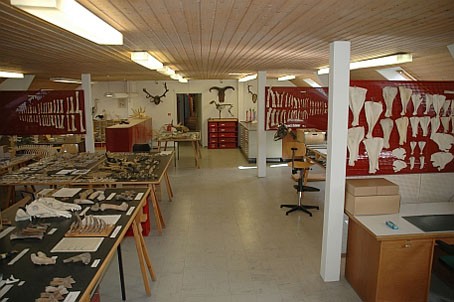Archaeozoological collection

The methodological base for this work is a reference collection comprising more than 30 000 skeletons, amassed and curated in collaboration with the Zoological Institute at Christian-Albrechts-Universität in Kiel. This collection enables the identification to species of the remains of mammals, birds and fish as well as bones of reptiles and amphibians.
At present, department staff are engaged in particular with research into the Mesolithic food economy and hunting, Late Mesolithic transformation processes and Late Iron Age and Holocene landscape changes in the Baltic Sea area with their profound influence on inter-cultural communication. Furthermore, investigations are carried out on finds of animal bones from the first millennium AD. Investigations follow both culture-historical/archaeological and scientific angles and are carried out in collaboration with both national and international partners, enabling a comprehensive picture to be obtained of the causes and consequences of social and spatial change. Our research partners are Kieler Graduiertenschule (The Postgraduate School of Kiel) “Human Development in Landscapes,” the Deutsche Archäeologische Institut (The German Archaeological Institute) in Berlin, Niedersächische Institut für historische Küstenforschung (The Institute for Historical Coastal Research, Niedersachsen) in Wilhelmshaven, Moesgård Museum, Højbjerg, in Denmark, the Universities of York and Bradford in the UK and Römisch-Germanische Kommission (Roman-Germanic Commission) in Frankfurt/M.
More about the history of archaeozoology in Schleswig
Download info flyer Archaeozoology and History of Fauna (PDF)